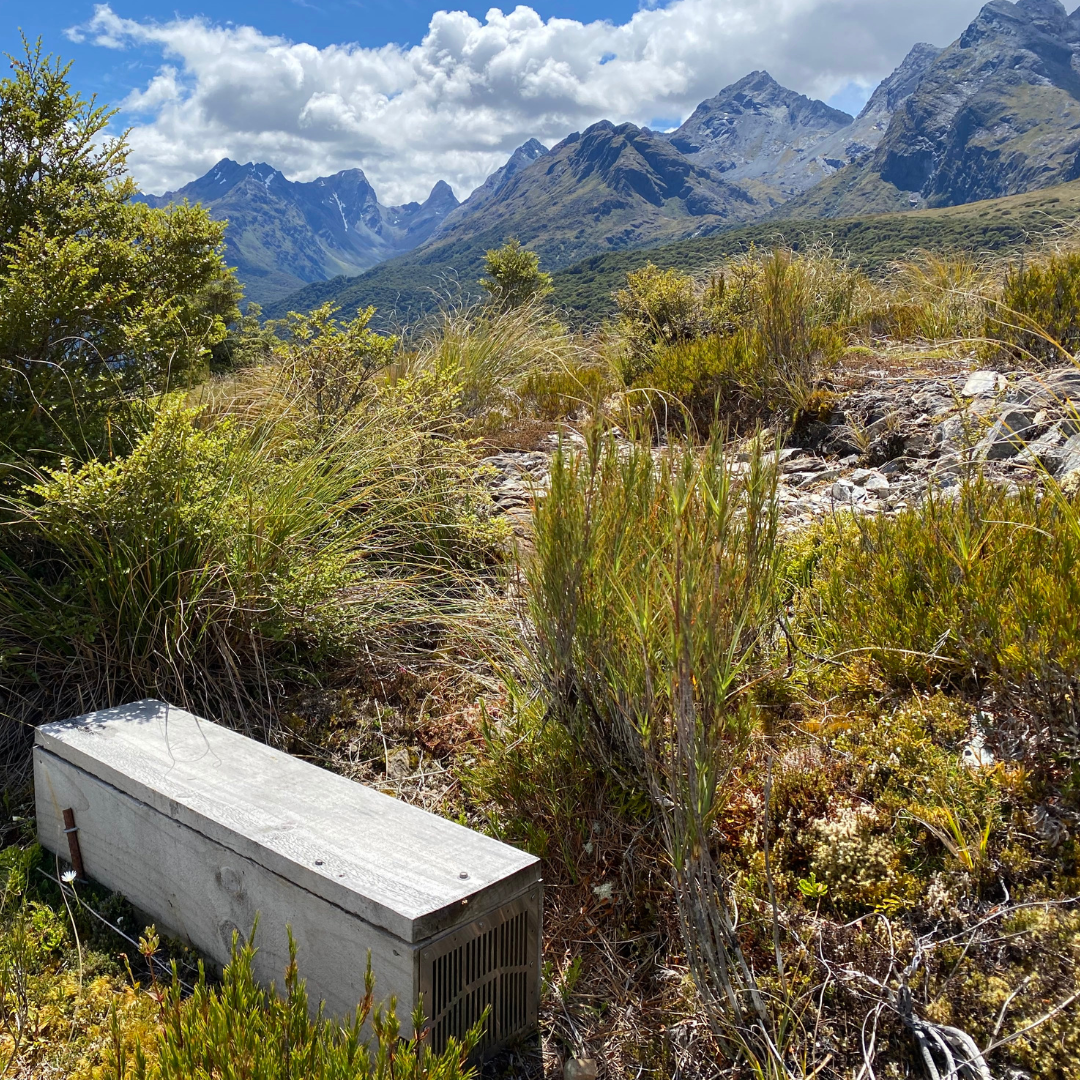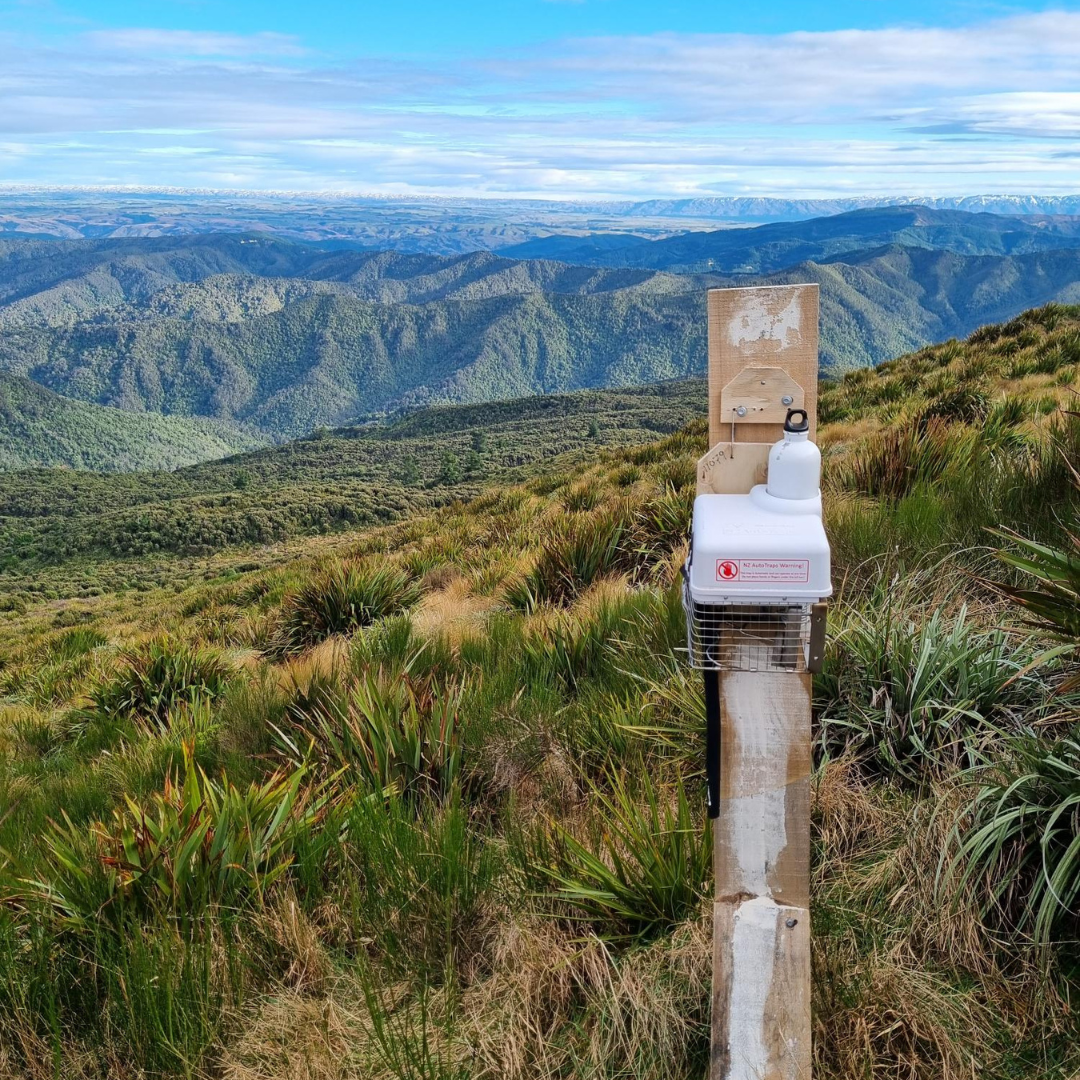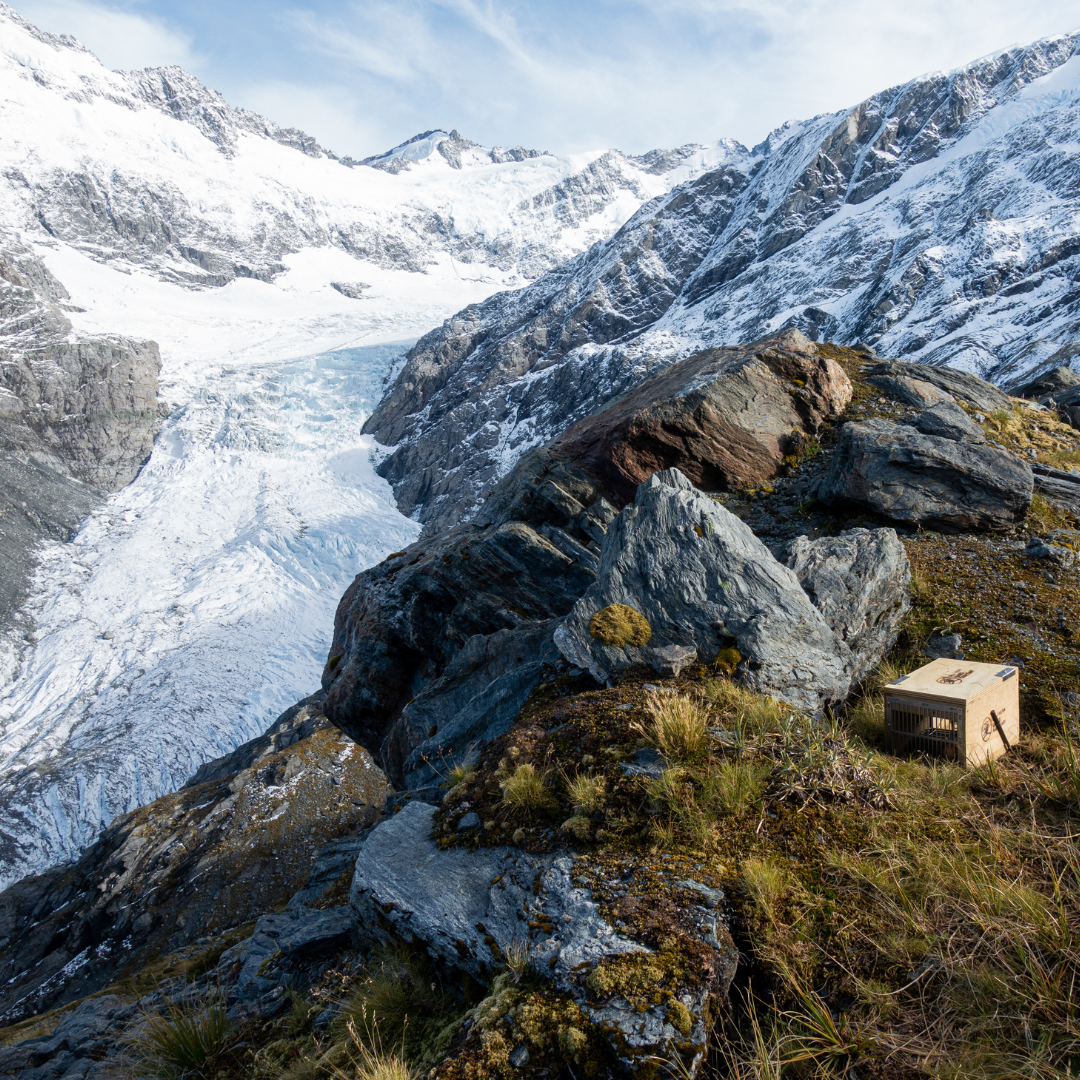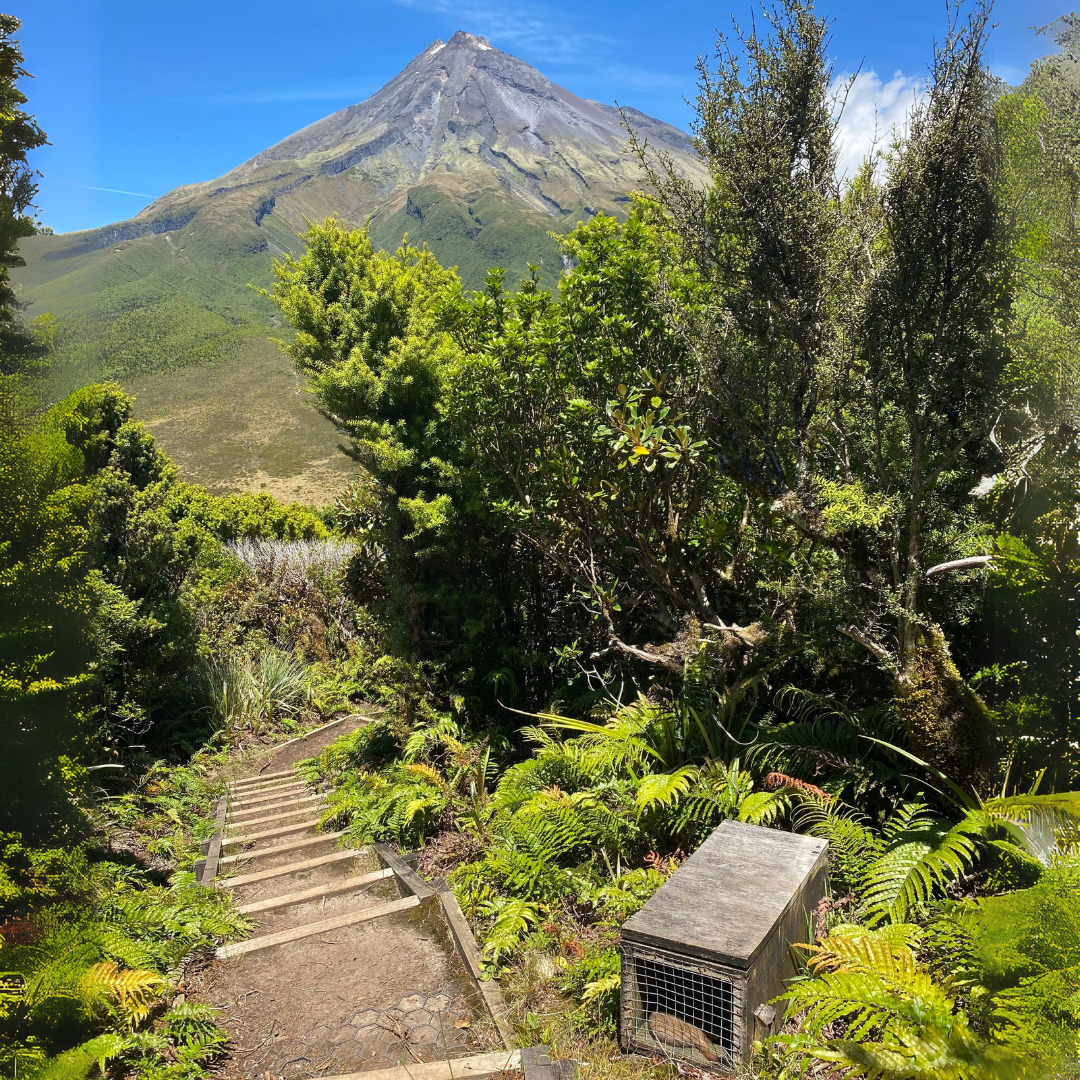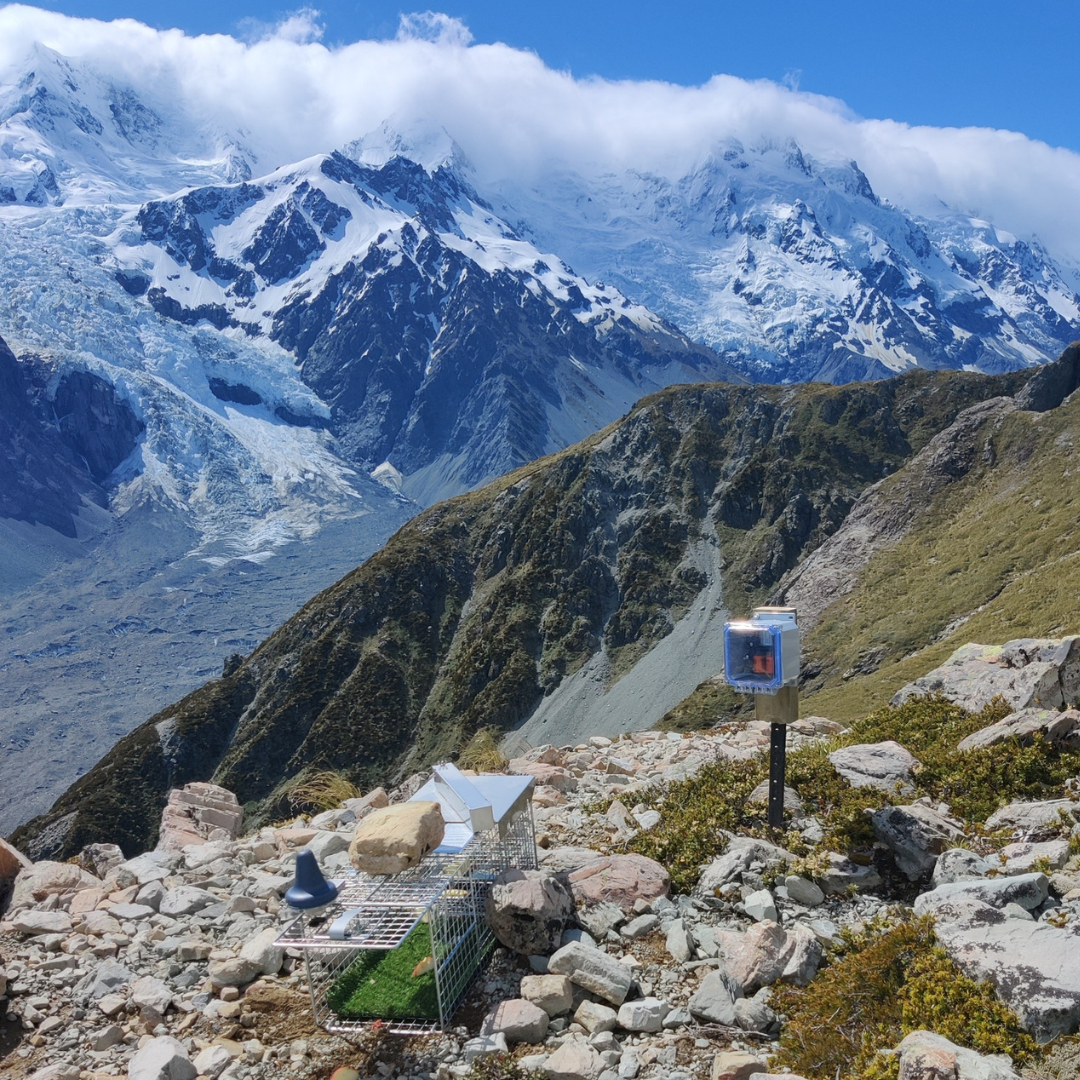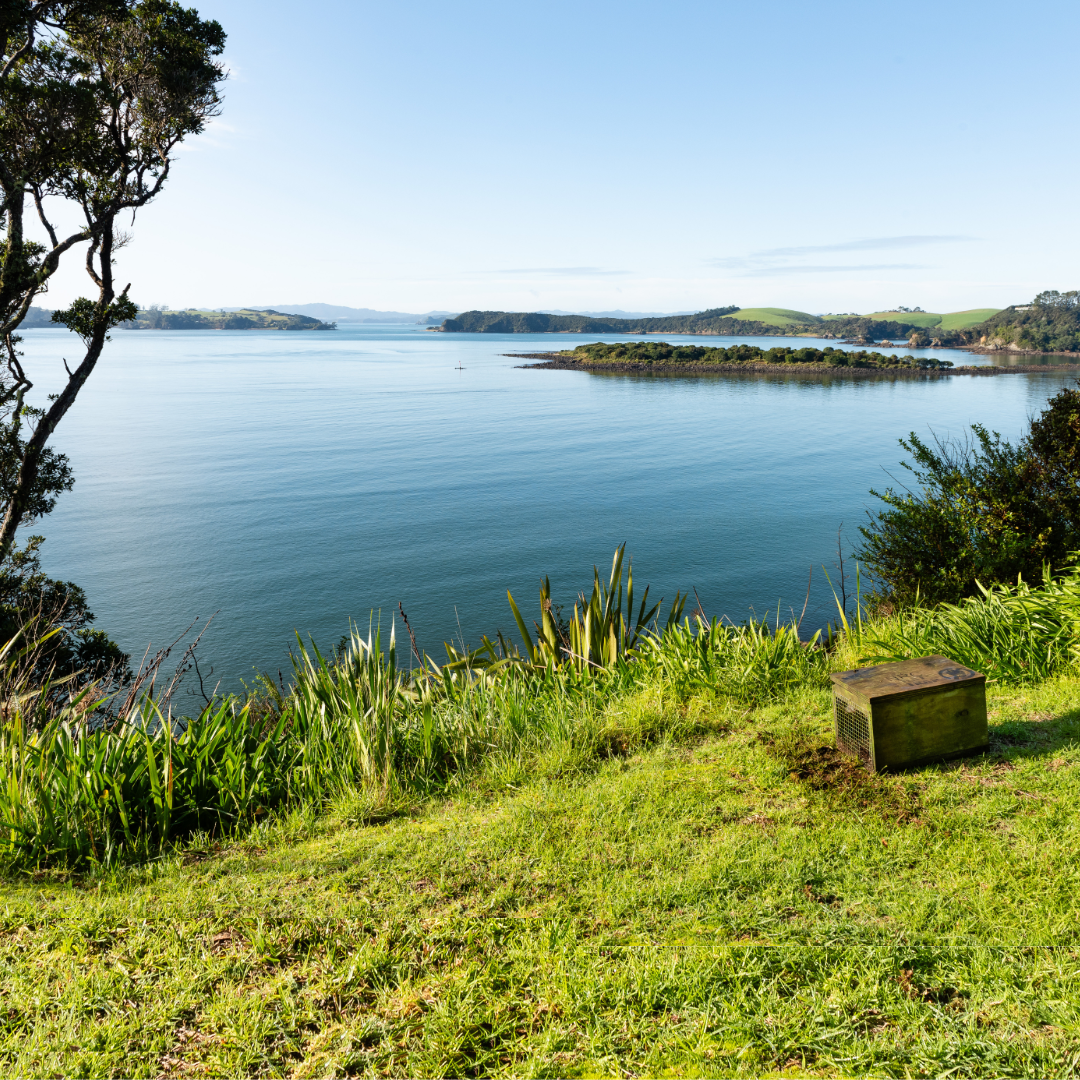Exploring most trails in Aotearoa, you might notice wooden boxes or contraptions. While mysterious to those unfamiliar, they are actually signs of hope. New Zealand Conservation Stories guest writer David Hannah explains.
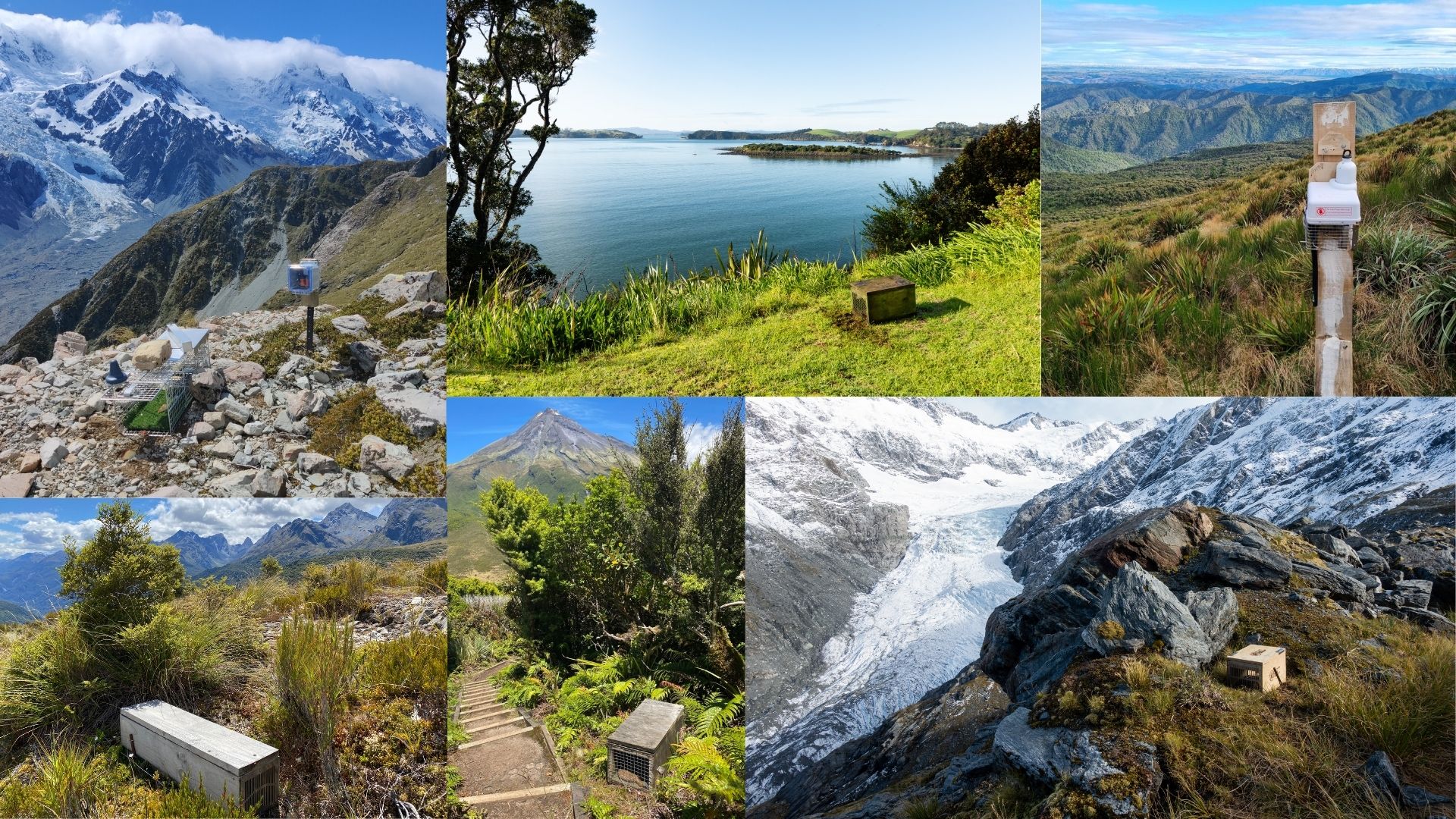
The wooden boxes and other contraptions you see while enjoying nature are traps: a hands-on response to the threat of introduced predators.
Some are set and maintained by the Department of Conservation, working to safeguard public conservation land. But many more are placed by Predator Free 2050 Limited projects, community groups, and volunteers.
Heartbreakingly, introduced predators have adapted and thrived in our country. They’ve invaded almost every corner of Aotearoa, from coastal podocarp forests to the alpine divides of the Southern Alps. Introduced possums have been recorded at 2,000 metres elevation, while feral cats have been recorded traversing the main divide between the East and West Coasts, crossing terrain at extreme elevations and invading isolated catchments that contain some of the last strongholds of our birdlife. Rats and stoats, too, are highly adaptive species that inhabit most environments across New Zealand.
One of the great strengths of our country, though, is that we are not content to let our species vanish silently into the long night of extinction. Dedicated members of our communities have risen together to draw lines in the sand and take ownership of saving their specific region. That grim determination—that ours won’t be the last generation to enjoy our native biodiversity—shines in a spirit that rises to meet the challenge of a predator-free future for our country.
Everywhere you go across Aotearoa, everyday Kiwis are working to remove introduced predators using a combination of existing tools, new technology, and sheer audacity. Yet this is only the beginning; for every habitat that’s got a movement, five more need our help and assistance.
We wanted to shine a light on some of these stories, hoping to inspire the public of Aotearoa (and ultimately the world) to get involved with safeguarding the country we all love.
So, let’s dive into the six most scenic traps in New Zealand and explore the impacts they’re having.
Routeburn, Fiordland National Park
Lucky Routeburn Track trampers will see rare and vulnerable species like mohua (yellowhead), pīwauwau (rock wren), kea, and whio (blue duck).
The area is managed by the Department of Conservation and the Routeburn Dart Wildlife Trust. Trapping and aerial operations give these native birds a fighting chance at survival.
Across the wider region around the Routeburn, a network of more than 1,000 traps keeps predator numbers low and ensures species, like the mohua, survive.
The Routeburn Dart Wildlife Trust volunteers have 600 traps surrounding the Dart and Rees riverbeds below and another couple hundred on local trails and private land around Glenorchy.
Swampy Summit, Dunedin
Perched on Swampy Summit, this automatic self-resetting trap overlooks the emerald-green valleys of the Silverpeaks near Dunedin. Predator Free Dunedin hauled hundreds of traps through thick flax, dense scrub, tussock, and fierce winds.
The Silverpeaks are stunning emerald-green hills and valleys of dense scrub, thick flax, and tussock surrounding the city.
Home to small remnant populations of kakaruai (robin), titipounamu (rifleman), and the kārearea (New Zealand falcon), the long-term vision for the Silverpeaks is to reduce introduced predators to near-zero levels, protecting 25,000 hectares of land.
Reducing predators in the Silverpeaks will allow for a city free of mammalian predators and peninsulas that serve as a sanctuary zone.
Dart Glacier, Mount Aspiring National Park
It’s high in these glaciers, which form part of the wider Mount Aspiring National Park, that many alpine species are making their last stand against waves of predators.
Here, pīwauwau (rock wren), kea, giant wētā, and lizards face intense predation from rats and stoats.
The Southern Lakes Sanctuary team, Routeburn Dart Wildlife Trust volunteers and the Department of Conservation maintain close to 4,830 traps in the Rees-Dart-Greenstone region.
The Dart Valley is located at the head of Lake Wakatipu and stretches back into the depths of the Southern Alps for more than thirty kilometres.
High-altitude traps, as pictured, help prevent stoats from reinvading the lower valleys, where threatened takahē now live.
Pouākai Crossing, Te Papakura o Taranaki (Egmont) National Park
Dotted along the Pouākai Crossing in Taranaki, you’ll see traps set by the Taranaki Mounga Project.
Te Papakura o Taranaki (Egmont National Park) is subalpine, forest, and scrub habitat, home to a variety of native species, including the western brown kiwi, whio (blue duck) and toutouwai (robin).
‘From rare to everywhere’ is the mantra for kiwi on Taranaki. After years of hardcore predator control to manage rats, stoats and possums, hundreds of translocated western brown kiwi call the area home.
Taranaki Mounga is an ambitious project that aims to restore 34,000 hectares of national park in the Taranaki region, and is part of the wider Towards a Predator Free Taranaki project. Thanks to their efforts, more kiwi are being reintroduced to the national park each year.
Malte Brun Range, Aoraki (Mount Cook) National Park
This possum trap perched at over 1,500 metres elevation, features a node that sends an alert when the trap is triggered.
Innovations like this from tech company Zero Invasive Predators (ZIP) are making predator control more effective, helping tackle introduced pests on a massive scale across vast and varied landscapes.
Te Manahuna Aoraki project is working to remove hares, stoats and possums from 310,000 hectares in the Upper Mackenzie Basin and Aoraki Mount Cook National Park.
As part of that work, 18,000 hectares of the Malte Brun Range are already free of stoats and possums. The next step is to expand this elimination into the Liegbig Range.
Opito Bay, Kerikeri
Situated in the Northland region, Kerikeri is an important habitat for kiwi, as well as fernbirds, geckos, and our native tree, the pōhutukawa—all of which are threatened by introduced predators.
This pictured trap is looked after by the local community conservation group, Kerikeri Peninsula Conservation Charitable Trust. More than 100 residents across 250 properties, plus parks and reserves, are volunteering time to check traps and remove stoats, rats and possums.
Trail cameras pick up the fruits of their labour: the most incredible wildlife antics, including kiwi calls and a rare bittern battling an eel.
Volunteer projects like these prove anyone can get involved in protecting nature and make a difference. There are thousands of community groups across the country putting in the work. Every trap set and every predator removed helps safeguard what makes Aotearoa so special.

